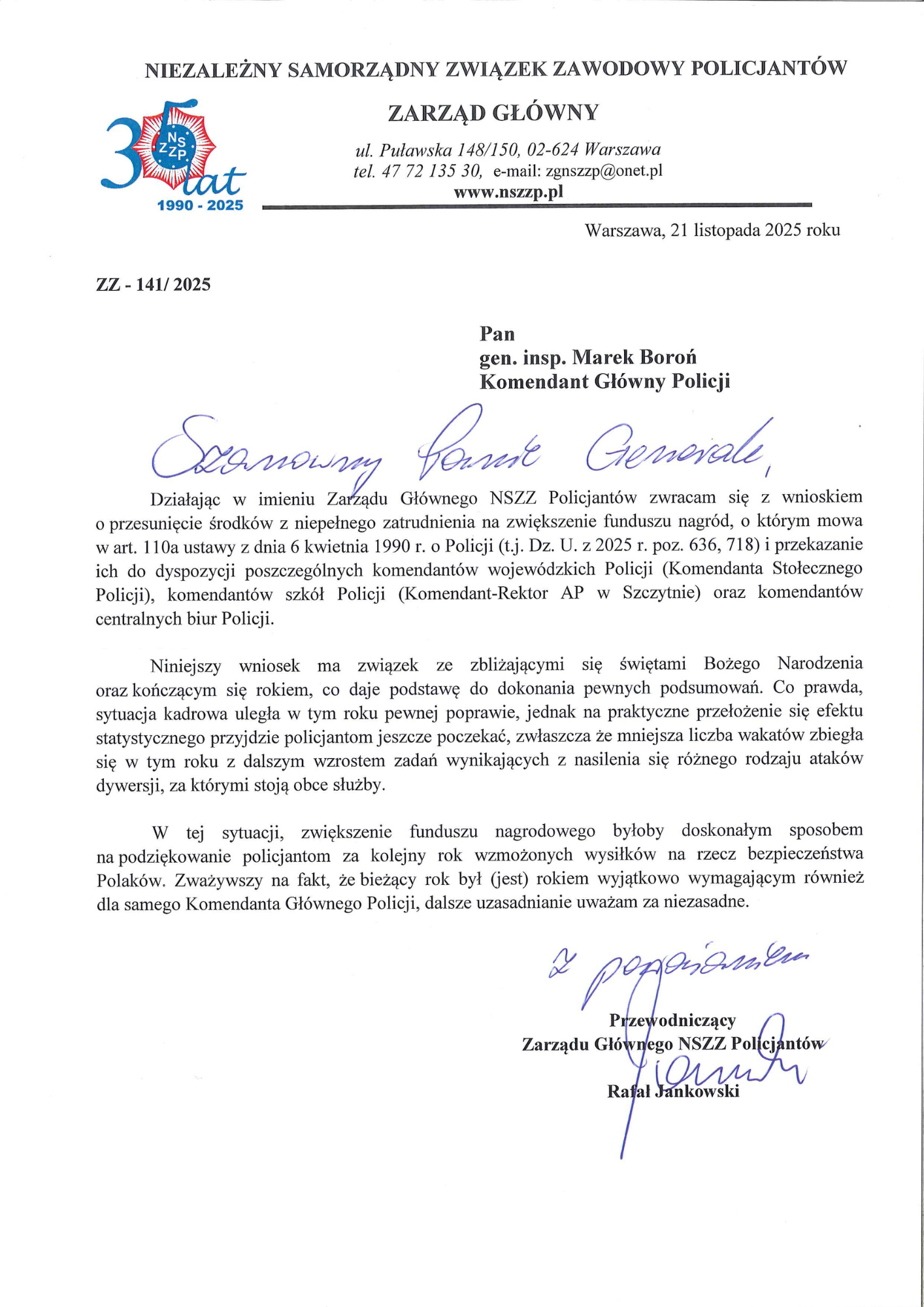
Autocar Magazine Unveils „90s Gems To Buy Now”
British motoring magazine Autocar has compiled a list of 1990s cars to buy and hold. The list is not full of Lamborghinis, Ferraris, or other high-end European exotics, but affordable classics that everyday enthusiasts can realistically afford.
Autocar’s Charlie Martin explained that the 1990s were defined by speed, with performance culture seeping into everyday life – from fashion to music to cars.
Martin said family sedans were transformed into high-performance machines, with models like the Sierra Sapphire Cosworth and Lotus Carlton becoming favorites among thrill-seekers and car thieves alike. He added that Japanese automakers gained prominence in the performance car world, bolstered by the rise of Sony’s PlayStation and its influential Gran Turismo racing game.
From Rovers to Porsches, and BMWs to Vauxhalls, Martin’s list of „90s Gems to Buy Now” sounds more personal than anything, but standouts like the BMW 8 Series, Mercedes SL, and BMW Z3 are both appealing and surprisingly affordable.
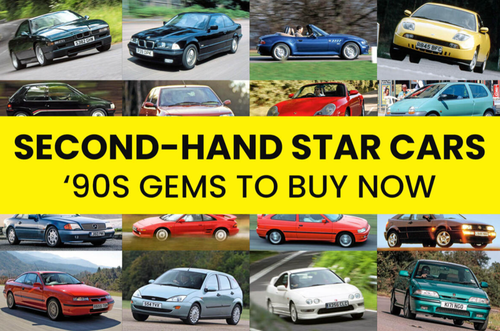
Here’s the full list:
Porsche Boxster (986)
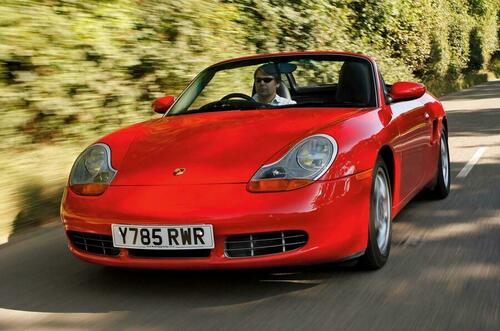
A howling flat six, super-sharp steering and stunning wide-hipped looks – they can all be yours from just £3000. Of course, the cheapest Boxsters are best avoided, but the truth is that these are surprisingly hardy little roadsters – provided you buy carefully.
Its best-known Achilles is the intermediate-shaft (IMS) bearing, which in some cases fractures or even shatters after a long and hard life. This then throws off the engine’s timing and shunts pistons into valves, requiring a really rather expensive rebuild.
Thankfully, many examples’ bearings have already been replaced, and typically with a sturdier aftermarket item that isn’t prone to exploding. If it hasn’t been done, add another £800 or so to the car’s price, if you get it done alongside a new clutch – which you probably should.
It’s also worth checking the immobiliser, locks and alarms work as intended: blocked door seals or a leaky roof can mean the ECU (located under the driver’s seat) gets wet and dies. Replacements are £500-plus.
Still, it’s easy to snag a good’ un – and you absolutely should, before prices soar.
Volkswagen Corrado VR6
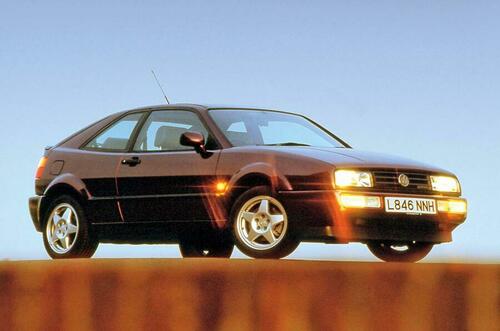
Volkswagen’s junior coupé was always a tidy steer, but its full potential wasn’t unleashed until 1992. The fitment of a potent 2.9-litre narrow-angle V6 made it the fastest front-driver of the day, and it somehow improved the handling compared with the smaller (but turbocharged) four-pot.
Every Corrado was made from galvanised steel, so they hold up better against rust than many rivals – and it’s a good indicator of a dodgy repair, which should be easy to spot.
High-milers go for around £6000, but you shouldn’t be scared off by that: these are generally reliable bona fide modern classics.
Vauxhall Calibra 4×4 Turbo
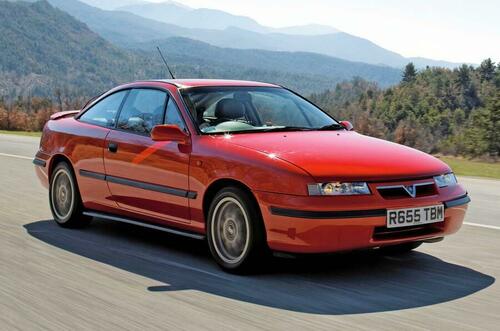
Early Calibras were tarnished with a reputation for being a bit too much like the Cavalier on which they were based. The 4×4 Turbo flipped that notion on its head, turning what was a slightly humdrum coupé into Britain’s cheapest 150mph car.
Today, though, they’re an expensive window onto the past, with prices venturing well into five figures.
Honda Integra Type R
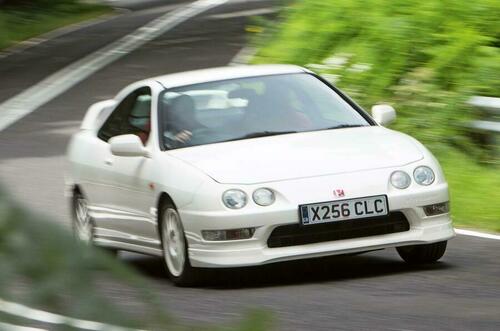
This was the car that really put the Type R name on the map when it landed here in 1998, thanks to an all-time-great engine and tremendous handling. Clean cars go for about £15k, but it’s also worth considering importing one from Japan while the yen’s value is low.
Rover 220 Turbo
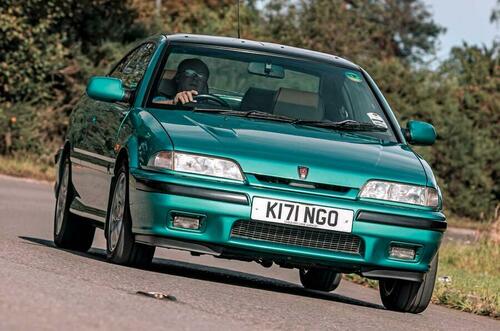
„Nasty steering, a vague gearchange, dubious handling and dead-feeling brakes,” we said back then, pulling no punches. The 220 may not be a good car to drive, but it has an intangible appeal as the plucky underdog.
These are now incredibly rare and prices vary wildly, but around £5000 should be enough to secure one in mint condition.
BMW 328i (E36)

„The hardest-hitting, least compromised all-rounder on sale for less than £30,000,” is what we reckoned of the 328i back in 1995. Much of the same remains true today, except you can snag one for one-tenth of the as-new asking price.
Many have led hard lives, though – these were sub-£1000 cars for a long time – so buy carefully.
Fiat Coupé
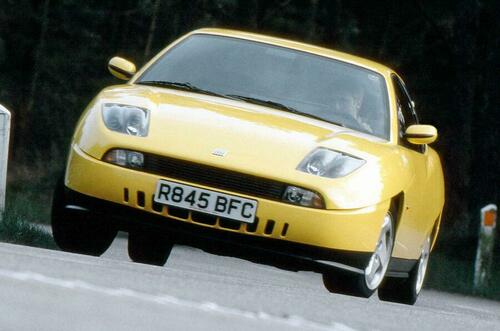
A Chris Bangle masterpiece, and not half bad to drive either. The five-cylinder 20-valve engine, offered in both naturally aspirated and turbocharged forms, has the most exotic feel, but the four-cylinder option, a descendant of the Delta Integrale powerplant, still has the means to entertain.
Rust is by far the biggest issue: inspect the sills, subframes, wheel arches, footwells, boot floor, exhaust… Basically, just give the whole thing a thorough going-over. Interior plastics are prone to developing a horrid sticky finish, too.
Running project cars can be found for £500, but the best examples are north of £10,000.
Toyota MR2 (SW20)

Forget the second-generation MR2’s reputation for having a wayward tail – we never thought that held very much water. Still, Toyota revised the model no fewer than five times, with updates two (in 1991) and three (1993) gradually softening the handling to tune out the risk of snap oversteer. Any MR2 is a great drive and a fairly reliable proposition, barring rust or any extensive modifications.
It’s worth seeking out a Japanese-import Turbo model or one with the atmospheric 'Beams’ engine that came with Yamaha-developed cylinder heads; either example brings with it the soundtrack and performance the car’s chassis and looks deserve.
Such cars will set you back around £10,000.
Renault Twingo
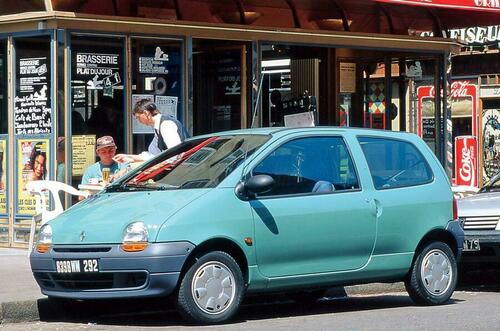
The Twingo has aged like Mr Blobby: once a tad unsightly, but now remembered for flouting convention and embracing the absurd. In the Twingo’s favour, it didn’t single-handedly traumatise a generation of children, so it’s looked back on a bit more fondly.
You can occasionally find them from £5k, but it’s perhaps easier to source and import a clean car yourself.
BMW Z3
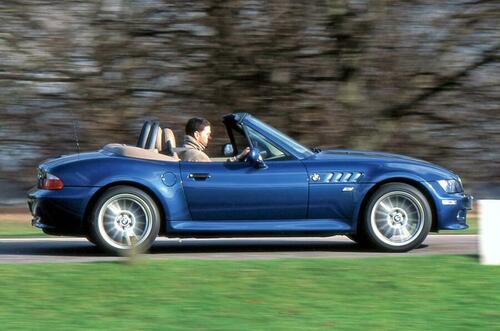
If it’s a pure driver’s car you want, look elsewhere. But the Z3 has otherwise aged tremendously, with long-nosed, low-slung proportions and – as long as you go for the 2.0-litre engine or bigger – some of BMW’s greatest straight-six lumps.
Prices – from £1000 – are on the up, so now is the time to buy.
Peugeot 306 GTi

„The GTi is back,” declared our road testers after sampling the performance-enhanced 306. For years, hot hatchbacks had been iced over, hamstrung by horrendous insurance premiums and the looming threat of theft.
But the French machine’s combination of a 167bhp four-pot (then one of the most powerful engines to have featured in a hatch), a six-speed gearbox (when most rivals made do with five ratios) and a simply stunning chassis raised the bar. Suddenly, the race was back on.
Avoid track-converted cars; clean examples should start at £5000 or so.
Mercedes-Benz SL (R129)
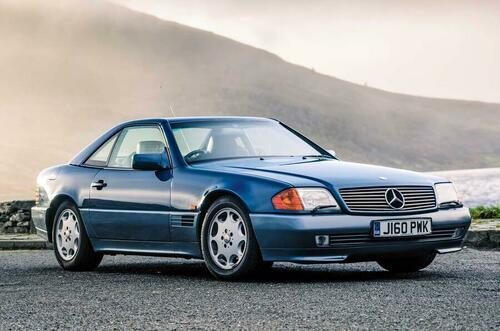
Technically speaking, the R129’s life started in the late 1980s, but the fourth-generation SL didn’t really hit the limelight until a few years later. Its sheer desirability – thanks in no small part to those futuristic lines and stonking £50k-plus price tag – made it the darling of the burgeoning hip-hop subculture.
And if you can picture yourself rollin’ in a 500 Benz, just like Tupac, the good news is that SLs are today shockingly affordable. Just £3000 gets you behind the wheel of a ropey car, but we’d budget £10,000 or so for something more dependable.
Engines ranged from a 2.8-litre V6 all the way up to a 7.3-litre V12 fettled by AMG (good luck finding one of those), but our pick was the grunty 5.0-litre V8, badged 500 SL. Look out for an original car with a good service history, and you shouldn’t encounter too many issues.
A hard-top roof is a desirable extra for the colder months, but the standard soft-top should prove adequate, providing it’s been properly looked after (or replaced in the relatively recent past with an official Mercedes-Benz part).
Ford Escort RS2000
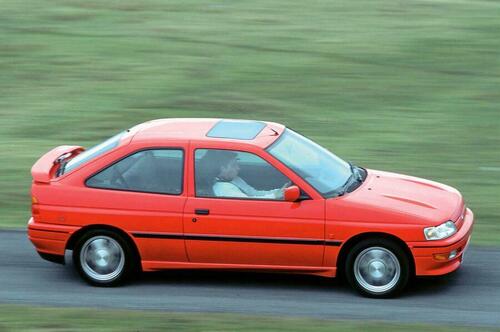
Hot hatches are nothing new, but it’s rare that the treatment proves to be the redemption story for what was otherwise a generational stinker.
So it proved, however, for the maligned Mk5 Escort, transformed by a fizzy 148bhp twin-cam four, quicker steering and a chassis overhaul. The addition of four-wheel drive in 1994 only raised its limits, making it a genuine Cossie-lite. As remixes go, it’s tantamount to The Prodigy turning a kids’ safety ad about not talking to strangers into a rave classic.
Not cheap today, though: expect to pay about £8000 for a good runner.
Peugeot 106 GTi
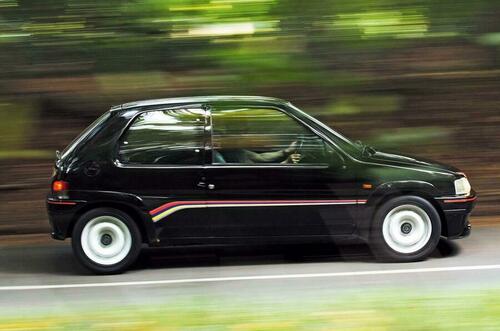
All the joy of the 306 GTi, but in a smaller, lighter and slipperier package. The 106 GTi was as close as Peugeot ever came to properly replacing the 205 GTi, and today a good example can fetch a five-figure sum.
At that price, though, you should also consider the 106 Rallye, which went without power steering and much of the cabin kit in pursuit of pure driving thrills.
Ford Focus
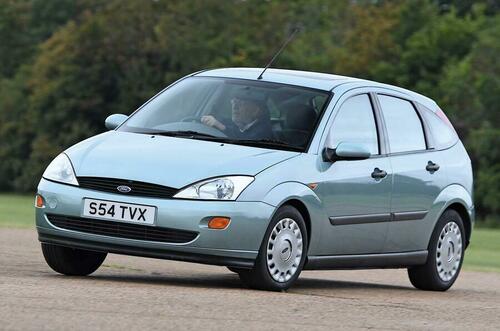
The Focus was the car that righted all the later wrongs of its Escort predecessor and democratised the attributes of all the best driver’s cars. Ignore the ST and the eye-wateringly expensive RS, and instead look for a tidy Zetec petrol that has managed to elude the tin worm.
Just a few thousand pounds should snag one you can enjoy for years to come.
BMW 8 Series
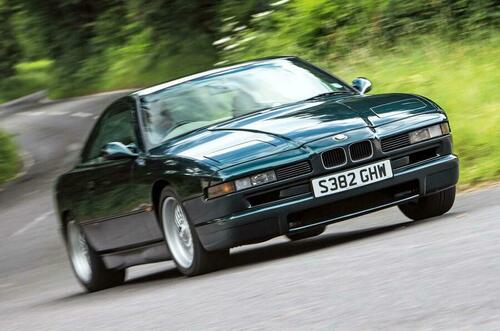
Munich’s Icarus was too heavy and too blunt in its responses to be a proper grand tourer, and it cost around the same money as Mercedes’ SL. But in 1993 the tide began to turn with the introduction of the 850CSi.
It was an M car in all but name, with its V12 engine upsized and boosted to a hearty 375bhp so the 8 could finally provide a driving experience that lived up to its gorgeous looks.
It’s also worth considering the later 4.4-litre 840Ci, which finally felt like the 8 Series had become a proper GT car. Prices for the 8 Series start at around £10,000, but CSis are now hitting £50,000-plus.
Standouts from the list include BMW 8 Series, Mercedes SL, and BMW Z3.
Tyler Durden
Tue, 07/29/2025 – 22:10








